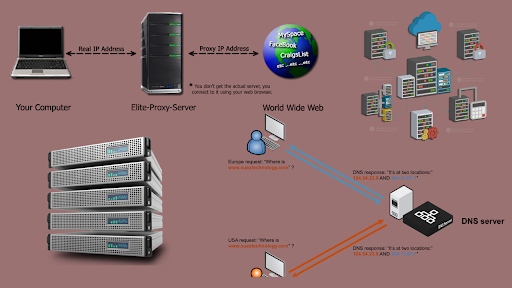Instagram is one of the fastest-growing social media platforms in the world. With over 1 billion active monthly users, it’s no wonder that businesses and individuals are looking to leverage the power of Instagram to reach new audiences and grow their brands. One of the best ways to learn about effective Instagram marketin g strategies is to follow the top influencers in the industry. These influencers have spent years cultivating their Instagram accounts, and they have a wealth of knowledge and experience to share. In this article, we’ll be exploring the top Instagram influencers to follow for inspiration and insights.
Gary Vaynerchuk (@garyvee)
Gary Vaynerchuk is a serial entrepreneur, investor, and social media guru. He has built a massive following on Instagram by sharing his expertise on entrepreneurship, marketing, and social media. Gary’s content is always raw, honest, and inspiring, and he is a great resource for anyone looking to grow their business on Instagram.
Jasmine Star (@jasminestar)
Jasmine Star is a photographer, business strategist, and social media influencer. Her Instagram account is full of beautiful photos, inspiring quotes, and helpful tips on how to build a successful business on Instagram. Jasmine’s content is always authentic and engaging, and she is a great source of inspiration for anyone looking to build their brand on Instagram.
Neil Patel (@neilpatel)
Neil Patel is a digital marketing expert and entrepreneur. He has built a massive following on Instagram by sharing his expertise on SEO, content marketing, and social media. Neil’s content is always informative and actionable, and he is a great resource for anyone looking to improve their digital marketing skills.
Pat Flynn (@patflynn)
Pat Flynn is an entrepreneur, author, and podcaster. His Instagram account is full of inspiring quotes, helpful tips, and behind-the-scenes looks at his business. Pat is a great resource for anyone looking to build a successful online business, and his content is always authentic and engaging.
Jenna Kutcher (@jennakutcher)
Jenna Kutcher is a photographer, entrepreneur, and influencer. Her Instagram account is full of beautiful photos, inspiring quotes, and helpful tips on how to build a successful business on Instagram. Jenna is a great source of inspiration for anyone looking to build their brand on Instagram, and her content is always authentic and engaging.
Amy Porterfield (@amyporterfield)
Amy Porterfield is a digital marketing expert and entrepreneur. She has built a massive following on Instagram by sharing her expertise on email marketing, social media, and online courses. Amy’s content is always informative and actionable, and she is a great resource for anyone looking to improve their digital marketing skills.
Casey Neistat (@caseyneistat)
Casey Neistat is a filmmaker, entrepreneur, and influencer. His Instagram account is full of behind-the-scenes looks at his life, inspiring quotes, and helpful tips on how to build a successful business. Casey is a great source of inspiration for anyone looking to build their brand on Instagram, and his content is always authentic and engaging.
Marie Forleo (@marieforleo)
Marie Forleo is a motivational speaker, author, and entrepreneur. Her Instagram account is full of inspiring quotes, helpful tips, and behind-the-scenes looks at her business. Marie is a great resource for anyone looking to build a successful online business, and her content is always authentic and engaging.
Tim Ferriss (@timferriss)
Tim Ferriss is an author, entrepreneur, and investor. His Instagram account is full of inspiring quotes, helpful tips, and behind-the-scenes looks at his life. Tim is a great source of inspiration for anyone looking to build a successful business, and his content is always authentic and engaging.
Rachel Hollis (@msrachelhollis)
Rachel Hollis is a motivational speaker, author, and influencer. Her Instagram account is full of inspiring quotes, helpful tips, and behind-the-scenes looks at her life. Rachel is a great resource for anyone looking to improve their mindset and achieve their goals, and her content is always authentic and engaging.
These top Instagram influencers have built their massive followings by consistently providing high-quality content that is both informative and engaging. By following them, you can learn about effective Instagram marketing strategies, get inspiration for your own content, and gain insights into how to build a successful business on Instagram.
But how do you actually leverage the insights and inspiration you gain from following these influencers? Here are a few tips:
Look for patterns and trends in their content
As you follow these influencers, you may notice certain patterns and trends in their content. For example, they may use certain hashtags consistently, or they may post at specific times of day. By paying attention to these patterns, you can begin to identify strategies that work well on Instagram and incorporate them into your own content.
Experiment with different types of content
One of the best ways to learn about effective Instagram marketing strategies is to experiment with different types of content. Try posting different types of content, such as photos, videos, and Instagram Stories, and see what resonates with your audience. By trying new things and paying attention to your engagement metrics, you can refine your Instagram strategy and improve your results.
Engage with your audience
Engaging with your audience is crucial to building a successful brand on Instagram. Take the time to respond to comments and direct messages, and ask your followers questions to encourage engagement. By building a strong relationship with your audience, you can create a loyal following that will help you grow your brand on Instagram.
Conclusion
Following the top Instagram influencers is a great way to gain inspiration and insights into effective Instagram marketing strategies. By paying attention to their content, experimenting with different types of content, and engaging with your audience, you can improve your results and build a successful brand on Instagram. So start following these influencers today and start taking your Instagram game to the next level!



